
15311826613
Click to add WeChatGold exists in various forms in nature, and its occurrence form determines the choice of gold refining process. Natural gold, also known as free gold, exists in the ore in the form of a single substance, with different particle sizes, and is a relatively easy-to-extract gold form; associated gold usually coexists with sulfide ores (such as pyrite and chalcopyrite), and the separation and recovery of the main metal and gold must be taken into account during the refining process; fine-grained gold is tightly wrapped by gangue minerals or sulfides, and the particle size is often less than 10μm. It is a difficult-to-process ore, which is difficult to extract and requires special processes.
The basic goal of gold refining is to achieve a balance between effective extraction, environmental compliance and economic feasibility. The extraction aims to recover the gold element in the ore to the greatest extent and improve resource utilization. Its economic feasibility requires comprehensive consideration of production costs and benefits to ensure that the refining process is sustainable at the commercial level. Below we will introduce the entire process of how to extract gold from gold ore!
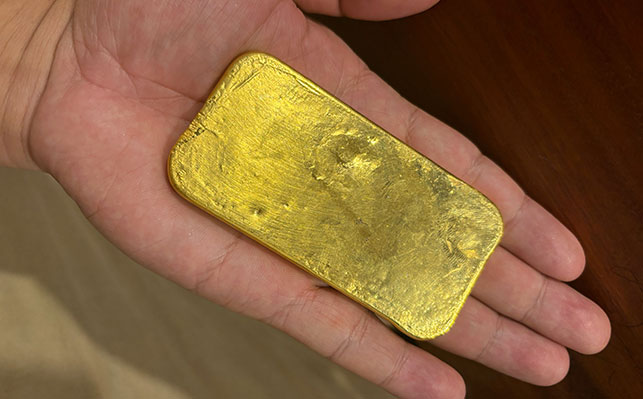
Crushing and grinding are the basic links of gold ore pretreatment. Crushing is divided into coarse crushing and fine crushing. Coarse crushing often uses a jaw crusher to crush the large ore mined to 100-200mm; fine crushing uses a cone crusher to further reduce the ore particle size to 10-20mm; subsequent grinding by a ball mill or rod mill to make the ore particle size meet the monomer dissociation requirements, generally grinding to -200 mesh accounts for 60%-80%. This process creates conditions for subsequent gold extraction and ensures that gold minerals are fully separated from gangue.
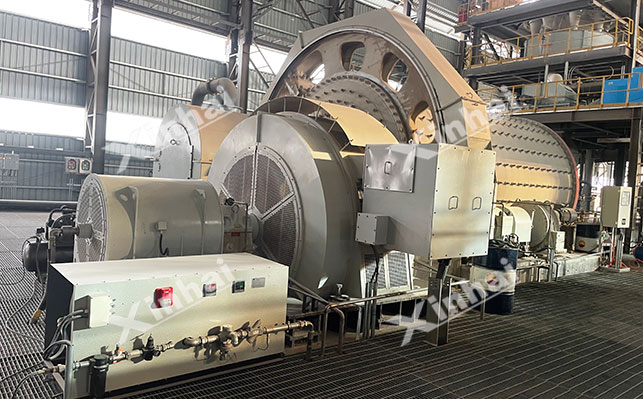
Classification and enrichment are achieved through spiral classifiers, hydrocyclones and other equipment. The spiral classifier uses the difference in the settling speed of the ore particles in the water flow to classify, returning the coarse-grained products to the grinding process and the fine-grained products to the next process; the hydrocyclone uses the centrifugal force to separate the coarse and fine particles in the slurry, further optimizing the slurry particle size composition and laying the foundation for gold enrichment.
The special pretreatment stage of gold ore is mostly for difficult-to-treat ores, and there are several methods such as roasting oxidation, biological oxidation, and high-pressure oxidation.
Roasting oxidation: For difficult-to-treat gold ores containing sulfides, roasting oxidation decomposes sulfides into metal oxides and sulfur dioxide gas at high temperatures (500-700℃). This process not only destroys the sulfide's encapsulation of gold, but also reduces the consumption of reagents during subsequent cyanide leaching. However, the roasting process will produce harmful gases such as sulfur dioxide, which requires a complete flue gas treatment system.
Biological oxidation: Use specific bacteria (such as ferrothiobacillus) to decompose sulfides, convert them into sulfates, and release the encapsulated gold at the same time. Biological oxidation is carried out at room temperature and pressure, with low energy consumption and environmental friendliness, but the treatment cycle is long, usually requiring weeks or even months.
High-pressure oxidation: Under high temperature (150-220℃) and high pressure (1-3MPa), sulfides are oxidized and decomposed by oxygen or air, effectively destroying the structure of fine particles encapsulating gold. This method has high processing efficiency, but the equipment investment is large and the operating conditions are strict.
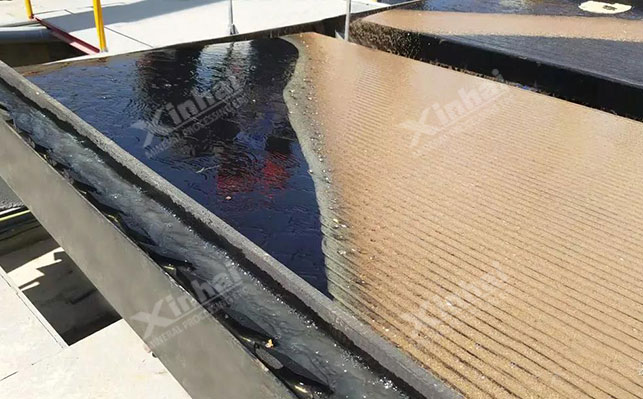
Gravity separation is mostly used to treat coarse free gold, using the density difference between gold and gangue to achieve separation under the action of gravity, centrifugal force, etc. Commonly used equipment includes jigs, shaking tables and centrifugal concentrators. Jigs use periodic water flow to separate mineral particles according to density; shaking tables use the reciprocating motion of the bed surface and the lateral water flow to separate mineral particles according to density and particle size; centrifugal concentrators use centrifugal force to strengthen the gravity effect and improve the recovery effect of fine gold. This method is low-cost and pollution-free, but the recovery rate is limited. It is often used as an auxiliary process in combination with other methods.
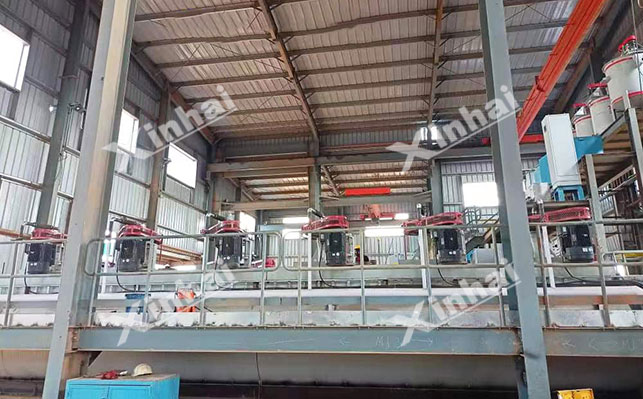
Flotation is suitable for the treatment of fine-grained gold or associated sulfide gold ores. It mainly utilizes the difference in the physical and chemical properties of the gold mineral and the gangue surface. By adding reagents, the gold mineral surface is hydrophobic, attached to the foam, and the gold mineral is carried to float to form a foam layer. The flotation process includes roughing, concentrating and tailings treatment. The grade of gold concentrate can be improved through multiple concentrating. This method has a good recovery effect on fine-grained gold, but the flotation reagent may cause environmental pollution and needs to be properly handled.
Gold extraction by cyanidation is a method widely used in gold ore dressing plants. According to different cyanidation methods, it can be divided into heap leaching cyanidation and stirring cyanidation.
Heap leaching cyanidation: suitable for the treatment of low-grade gold ore (gold grade is usually less than 1g/t). After the ore is crushed to a certain particle size, it is piled on an impermeable cushion layer and sprayed with sodium cyanide (NaCN) solution for leaching. The solution penetrates through the pores of the ore and reacts with gold to form a soluble gold-cyanide complex. After collection, the gold is extracted by zinc powder replacement or activated carbon adsorption.
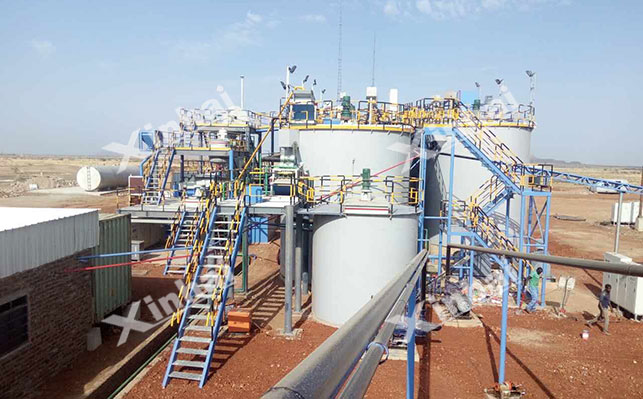
Agitation cyanidation: For high-grade gold ore (gold grade is usually higher than 3g/t), the ground slurry is fully mixed with sodium cyanide solution in a stirring tank and leached under aerobic conditions. The leached slurry is used to recover gold through zinc powder replacement or activated carbon adsorption. Zinc powder replacement uses the reducing property of zinc to replace the gold in the gold-cyanide complex; activated carbon adsorption uses the adsorption characteristics of activated carbon on the gold-cyanide complex, and then obtains gold through desorption, electrolysis and other processes.
Thiourea method: Suitable for the treatment of copper-containing gold ores. Thiourea forms a stable complex with gold in an acidic medium, but thiourea is easily oxidized and decomposed, the reagent consumption is large, and impurities such as copper in the leaching solution will affect the recovery of gold, which requires pretreatment and purification.
Chlorination method: Gold is oxidized into soluble gold salts in an acidic environment by strong oxidants such as chlorine and sodium hypochlorite. The chlorination method has high leaching efficiency and strong adaptability to complex ores, but the operating conditions are harsh, the equipment needs to have good corrosion resistance, and oxidants such as chlorine have safety risks.
Pyrometallurgy is suitable for processing high-grade gold concentrate or gold alloys. Gold concentrate or gold alloys are smelted at high temperatures (temperatures up to 1200°C) in electric arc furnaces and converters to separate gold from impurities. During the smelting process, gold is enriched at the bottom of the melt, and impurities form slag that floats up and is discharged. Subsequently, electrolytic refining is used to separate gold and silver. Common methods include the Miller method and the Walwell method.
Miller method: Chlorine is used to selectively chlorinate gold and silver, leaving gold at the anode, and impurities such as silver form chlorides that volatilize;
Walwell method: By controlling the composition of the electrolyte and the current density, gold is electroplated, and the purity can reach 99.99%.
Electrolytic refining is based on the principle of electrochemistry. The crude gold is used as the anode and the pure gold flakes are used as the cathode, and are placed in a gold-containing electrolyte. After power is applied, the crude gold at the anode dissolves, the gold ions are deposited on the cathode, and the impurities are precipitated in the form of anode mud. By controlling the electrolytic conditions, impurities such as silver and copper can be effectively removed to produce high-purity gold.
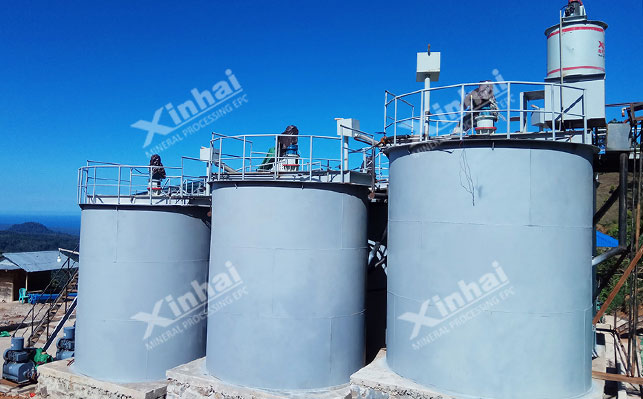
The treatment of arsenic-containing gold ore usually adopts the "roasting-washing to remove arsenic-cyanidation" process. First, arsenic is oxidized to arsenic trioxide by roasting and volatilized, while gold is exposed; the ore after roasting is washed to remove residual arsenic, and then cyanide leaching is performed to extract gold. This method needs to pay attention to the control of arsenic pollution during roasting. Two-stage roasting or combined biological oxidation and other technologies can be used to reduce the arsenic content.
Carbonaceous materials in carbon-containing gold ore will adsorb gold-cyanide complexes, affecting the recovery of gold. Treatment methods include pre-oxidation (such as roasting, biological oxidation) to destroy the carbonaceous structure, or using activated carbon inhibition technology, adding activated carbon during the cyanidation process, competitively adsorbing gold-cyanide complexes, and reducing the adsorption of carbonaceous materials.
For fine-particle encapsulated gold, ultrafine grinding (particle size can reach -5μm) is required to fully dissociate the gold, combined with chemical oxidation (such as hydrogen peroxide oxidation, ozone oxidation) to destroy the encapsulation structure, and then extract the gold through cyanide leaching or non-cyanide leaching. This process has extremely high requirements for equipment and operation, and the grinding particle size and oxidation conditions must be strictly controlled to improve the recovery rate of gold.